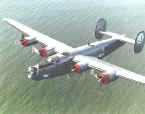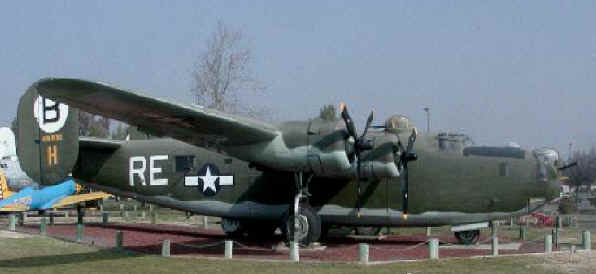 |
Consolidated
B-24 Liberator
It had easily recognizable
oval-shape endplate fins and rudders, and unique 'roller shutter' doors
which retracted within the fuselage when opened for attack, causing less
drag than conventional bomb-bay doors which opened into the slipstream.
|
The common perception of the Liberator
is that it was less durable than the Flying Fortress, despite the fact
that it was superior to its cousin in speed, range and bomb load. It had
a more spacious fuselage and better adaptability.
F-7A Photographic Reconnassance
Version
The 5th AF's first multi engined reconnaissance unit, the 20th Combat
Mapping Squadron was equipped with converted F-7A Liberators, and
deployed to New Guinea in March 1944, arriving at the beginning of the
‘blue or no blue’ color schemes. The first batch of F-7s arrived
painted blue, but by late May 1944 paint stripping had commenced in
earnest. Their initial batch of aircraft had all been B 24Js, which left
the Consolidated factory at Fort Worth, Texas, and proceeded to the
Northwest Airlines modification center at Holman Field, Saint Paul,
Minnesota for conversion to F-7A specifications.
United States Navy B-24's
B-24s operating with the US Navy were known as PB4Y-1s, and those
modified as transports were designated C-87s by the Army. Typical crew
was ten. Crews of up to eleven men were standard on 868th Snoopers in
the Pacific, with the 11th man the radar operator. |

